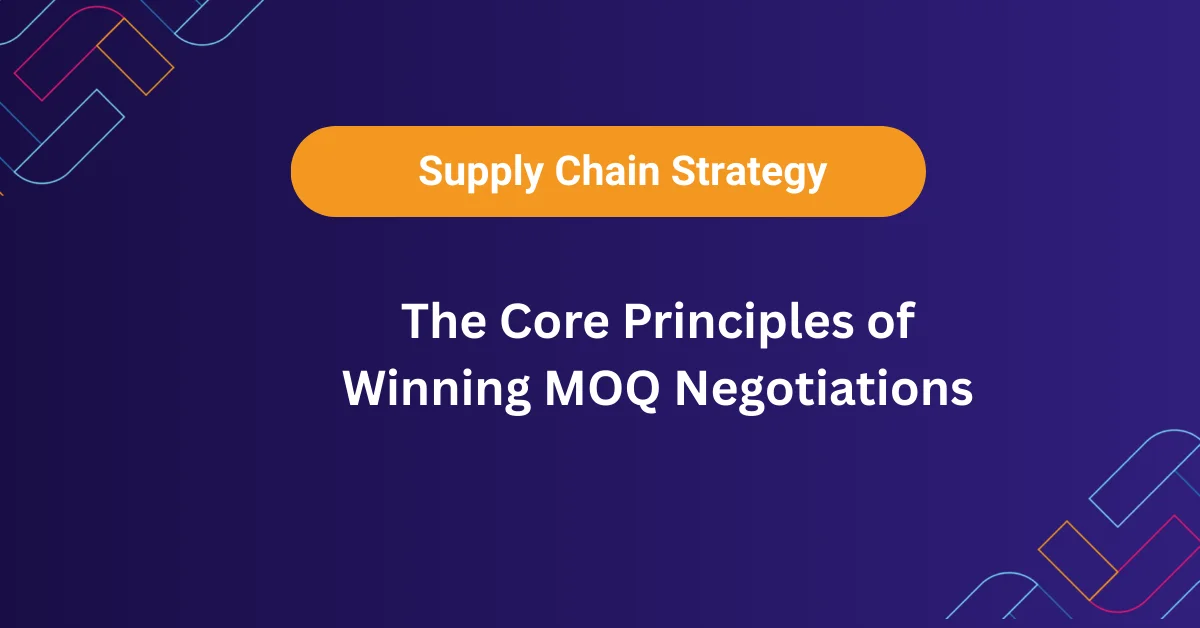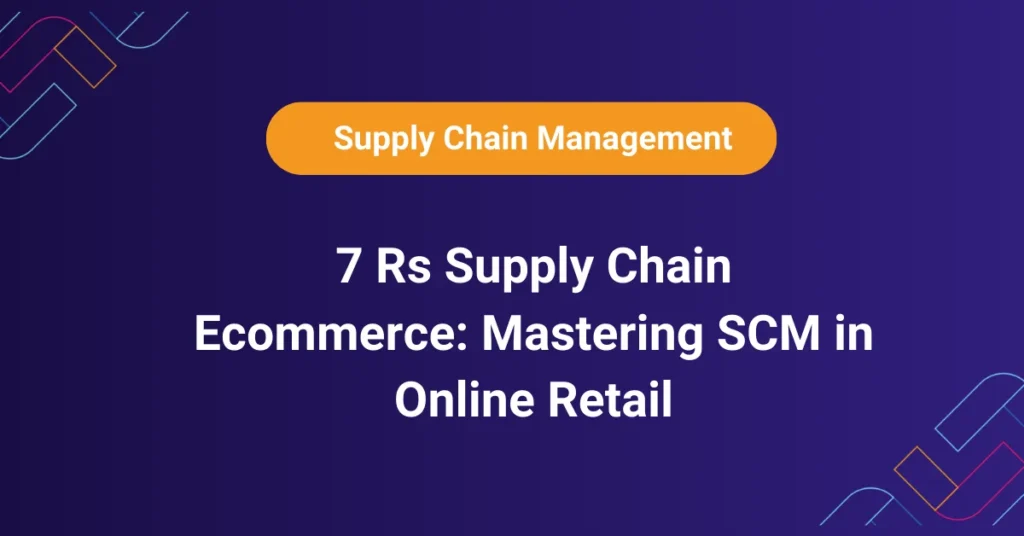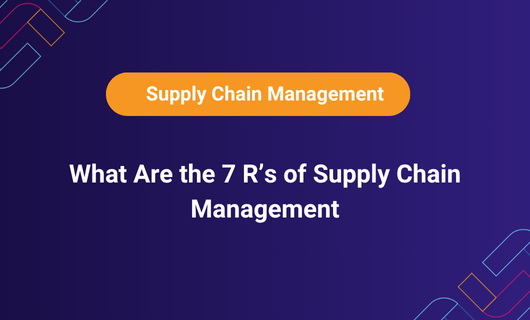That sinking feeling is all too familiar for e-commerce leaders. You’ve found the perfect product, a potential game-changer for your Shopify store or Amazon catalog. Then you see it: the Minimum Order Quantity. The number isn’t just high; it’s a direct threat to your cash conversion cycle, your 3PL storage budget, and your operational agility. The supplier’s terms force an impossible choice: gamble a dangerous amount of working capital or walk away from growth. What’s the reality for you right now? You’re likely facing strained supplier conversations and missed opportunities. By applying ABC XYZ segmentation, you can prioritize orders and forecast demand more accurately, turning supplier negotiations into strategic partnerships. Achieving this isn’t about tough talk; it’s about using data-driven MOQ negotiation tips that build bridges instead of burning them.
The Core Principles of Winning MOQ Negotiations
Mastering minimum order quantity discussions requires a fundamental shift in perspective. For operations leaders at 7–9 figure brands, this isn’t haggling; it’s strategic inventory management in SCM. The goal is to reposition the conversation from a zero-sum game into a collaborative effort to de-risk the business relationship for both parties. Success hinges on demonstrating your value as a reliable, long-term partner worth making exceptions for. The following actionable strategies provide a blueprint for these critical discussions.

Ground Your Request in Irrefutable Data
Suppliers operate on margins and efficiency. An emotional appeal holds no weight, but a spreadsheet tells a compelling story. Your first and most powerful step is to build a business case grounded in what-is-supply-chain-management principles—so logical that agreeing to it is clearly in the supplier’s own interest.
-
Diagnose Their Cost Drivers: Before you even make a request, understand their constraints. Politely ask, “To help me plan better, could you share what primarily determines your MOQ? Is it raw material batch sizes, molding setup time, or packaging minimums?” The answer reveals what you’re actually negotiating against.
-
Arm Yourself with Key Performance Indicators: Prepare a one-page summary of your company’s performance. This is your leverage.
-
Inventory Turnover Ratio: “Our current turnover sits at 8.5. Your proposed MOQ would drop this to 4.2, significantly below our target and increasing our holding costs.”
-
Historical Payment Reliability: “As you know, we have a perfect Net-30 payment history over 24 months and a 98% on-time receiving accuracy at our 3PL, minimizing disputes.”
-
Projected Growth Modeling: “Based on our marketing launch plan and historical sales velocity of similar SKUs, we conservatively forecast selling 80% of the proposed MOQ within the first 90 days. This de-risks a larger second order.”
-
What data helps win the negotiation?
The most persuasive data includes your company’s sell-through rate, inventory turnover ratio, and proven payment history. Demonstrating your efficiency as a operator makes you a lower-risk partner, justifying flexible terms.
The Data-Backed Request Script
Thank you for providing the quote. We are very confident in this product’s potential with our audience. Our ecommerce inventory forecasting shows a consistent sell-through rate for this category, and the proposed MOQ represents a significant inventory commitment that impacts our cash flow targets. However, our launch forecasts are strong and indicate we will be ready for your standard MOQ on the subsequent order. Given our reliable partnership and increasing order volume, could we begin with a pilot order to validate demand quickly and ensure a successful launch for both of us?
This script demonstrates professionalism, respects the supplier’s needs, and uses your business data as leverage to propose a logical, low-risk alternative.
Innovative Alternatives to a Straight MOQ Reduction
When a supplier cannot move on the base unit number, leverage inventory accuracy services to shift the negotiation toward other levers that achieve the same goal: reducing your upfront financial burden and minimizing inventory risk.
Master the Mixed Carton Negotiation: This is arguably the most effective tactic. Instead of ordering 2,000 units of one sweater, propose ordering 400 units each of five different colors. This meets their total production volume MOQ while allowing you to test the market with lower quantities per SKU, dramatically mitigating your risk on slow-moving variants.
Negotiate Extended Payment Terms: Propose sticking to the standard MOQ in exchange for moving from Net-30 to Net-45 or Net-60 payment terms. This allows you to receive, sell, and collect revenue from a significant portion of the inventory before the invoice is due, transforming your cash flow dynamics.
Explore a Consignment Model: For trusted, long-term partners, suggest a consignment inventory arrangement. You take possession of the goods but only pay for them as they sell. This eliminates your inventory risk entirely but requires sophisticated systems and a deep, trusting relationship.
Can I negotiate pack size instead of MOQ?
Yes, and it’s a highly effective strategy. Negotiating assorted pack sizes or mixed cartons allows you to meet the supplier’s overall production volume target while ordering smaller quantities of individual products. This is often easier for them to accept than a pure unit reduction.
Propose Phased Rollouts and Trial Orders
Reframe a lower initial order not as a rejection of their terms, but as the first step in a larger, de-risked product launch strategy.
-
The Pilot Program Agreement: Propose a smaller “test order” to validate the product in your specific sales channels. Crucially, put in writing that upon hitting predefined sales metrics (e.g., selling 75% of units within 60 days), you will automatically place a full-sized MOQ order. This gives the supplier confidence in the future volume.
-
Staggered Delivery Schedules: Agree to the full MOQ, but negotiate for it to be manufactured and shipped in multiple batches over a defined period (e.g., 500 units per month for four months). You secure the per-unit cost advantage of a large order while managing your warehouse space and cash flow more effectively. This is often more palatable for suppliers as it helps them smooth their production planning.
Are trial orders effective?
Yes, when structured correctly. Presenting a trial order as “Phase 1” of a larger commitment, with clear triggers for a follow-up order, shows the supplier you have a serious growth plan. It transforms the request from a limitation into a strategic, data-driven investment.
Build Trust Through Transparency and Forecasting
A supplier’s primary fear is uncertainty. By providing unprecedented visibility into your operations, you become a predictable and preferred partner, making them more amenable to flexibility.
Implement Shared Rolling Forecasts: Commit to providing a 13-week rolling forecast, updated weekly. This doesn’t bind you to a purchase order but gives the supplier invaluable data to plan their raw material purchases and production capacity efficiently. This reduced planning cost for them can be your ticket to a lower MOQ.
Discuss System Integration: For larger brands, explore light integration between your inventory management system (like Brankit) and their ERP. Automated stock-level alerts can trigger replenishment conversations before a stockout occurs, making you a seamless, low-maintenance client.
How do shared forecasts help?
Shared forecasts reduce the supplier’s planning uncertainty and carrying costs. When they can see your expected demand, they can optimize their production schedules, reducing their cost per unit. This increased efficiency often makes them more willing to accommodate flexible MOQs, as your business becomes more profitable for them to manage.
Protect Your Business with Ironclad Agreements
Verbal agreements are worthless in procurement. Any change in terms must be documented meticulously to protect your business from quality issues or misunderstandings.
-
Create a Terms Addendum: Draft a simple addendum to the master supplier agreement that explicitly states the new trial MOQ, revised payment terms, phased delivery schedule, and—critically—all quality standards.
-
Institute a Quality Holdback Clause: A common fear with smaller orders is receiving inferior “leftover” production. Mitigate this by contractually stipulating that a portion of the payment (e.g., 10-15%) will be held until the goods pass your quality inspection at the receiving warehouse. This aligns their financial incentive with your quality requirements.
-
Specify Logistics to Avoid 3PL Chaos: Ensure the contract mandates specific packaging, barcode labeling (GS1-128), and carton content documentation. Inaccurate shipments create massive labor costs at your 3PL, erasing any savings from the negotiation.
What contract terms to include?
Essential terms include the exact trial order quantity, revised payment dates, detailed quality standards and the inspection process, a financial holdback clause for quality disputes, and explicit packaging and labeling specifications to ensure seamless receipt at your fulfillment center.
How to maintain quality with lower MOQ?
Implement a formal Quality Assurance (QA) inspection process upon receipt at your 3PL. Fund this by including a 10-15% payment holdback clause in your contract that is only released once the QA inspection is passed. This gives the supplier a direct financial incentive to maintain their standards, regardless of order size.
Cultivate the Relationship for Long-Term Advantage
The most successful negotiations are conducted long before the contract is drawn up. They are built on a foundation of mutual respect and proven reliability.
-
Invest in Face Time: If feasible, visit the factory. A face-to-face meeting builds immense goodwill and demonstrates that you are a serious, committed partner, not a faceless online entity.
-
Become Their Easiest Client: Go out of your way to be low-maintenance. Pay invoices early. Provide crystal-clear POs. Communicate proactively about delays or issues. When you’re the client that never causes problems, you earn social capital that can be spent when you need a critical favor.
-
Find a Value Exchange: Always approach a negotiation with a give-and-take mindset. Can you offer a slightly higher per-unit price for the trial order? Can you consolidate other product lines with them? Can you provide a testimonial or case study? Find a way to give them a win.
What are fair compromises?
Fair compromises include a modestly higher per-unit price for a lower initial quantity, agreeing to prepay a percentage of the order, guaranteeing a larger follow-up order, committing to a longer-term contract, or offering promotional support like product features in your marketing materials.
How do I ask suppliers to lower MOQ?
Approach it collaboratively, not confrontationally. Lead with your enthusiasm for a long-term partnership. Present a concise, data-backed case for why flexibility makes strategic sense for both parties, and conclude with a specific, reasonable ask. For example: “Given our growth trajectory and reliable history, could we start with 30% of the MOQ to accelerate our launch timeline?”
Frequently Asked Questions
Call To Action
Far far away, behind the word mountains, far from the countries Vokalia and Consonantia, there live the blind texts. Separated they live in Bookmarksgrove right at the coast
Far far away, behind the word mountains, far from the countries Vokalia and Consonantia, there live the blind texts. Separated they live in Bookmarksgrove right at the coast
Far far away, behind the word mountains, far from the countries Vokalia and Consonantia, there live the blind texts. Separated they live in Bookmarksgrove right at the coast
Call To Action
Mastering these MOQ negotiation tips requires not just strategy but also the right tools. Accurate data, reliable forecasts, and clear visibility into your cash flow are non-negotiable for negotiating from a position of strength. Brankit’s supply chain platform is engineered to give you that advantage, turning your inventory data into your most powerful negotiating asset.
Ready to transform your supplier relationships and unlock your working capital? Talk to our supply chain expert today for a personalized consultation.





